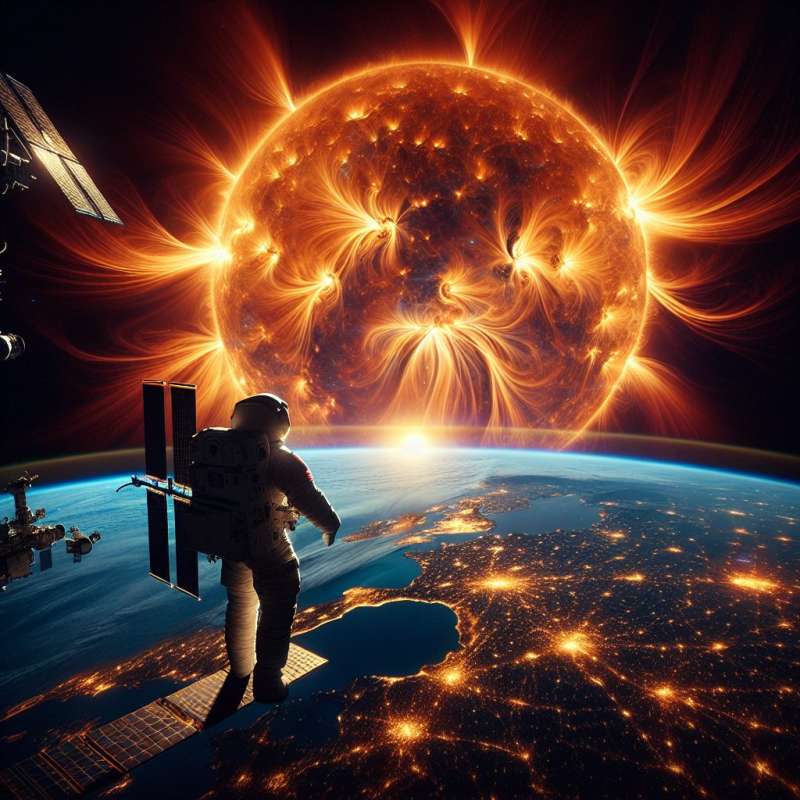
The Sun's Dynamic Surface
The Sun's surface, the photosphere, isn't solid. It's a layer of plasma with 'granules'—convection cells the size of Earth—constantly bubbling due to nuclear fusion beneath.
Solar Flares' Immense Power
Solar flares can release more energy than millions of 100-megaton hydrogen bombs exploding simultaneously, affecting Earth's magnetic field and potentially disrupting communication systems.
Sunspots: Cooler Giant Marks
Sunspots are temporary phenomena on the Sun's photosphere that appear as spots darker than the surrounding areas. They are cooler regions caused by magnetic activity.
The Sun's Musical Pulse
The Sun resonates with natural vibrations from its internal plasma waves. It's like a bell, creating harmonics that can tell us about its internal structure.
Helioseismology: Solar Seismic Waves
Helioseismology studies the propagation of wave oscillations, or 'sunquakes,' within the Sun. These waves offer clues about the Sun's inner processes and structure.
The Sun's Traveling Influence
The solar wind, a stream of charged particles from the Sun's corona, travels through the solar system, influencing planetary magnetospheres and creating phenomena like auroras.
The Sun's Chemical Mystery
The Sun's corona, its outer atmosphere, is mysteriously hotter than its surface. At over 1 million degrees, the corona's heating mechanism remains a topic of intense research.Solar Tornadoes
Solar tornadoes, larger than Earth, spin at speeds over 300,000 km/h. These plasma vortices reveal the Sun's magnetic complexities.
What is the Sun's surface called?
Corona
Photosphere
Chromosphere
Company